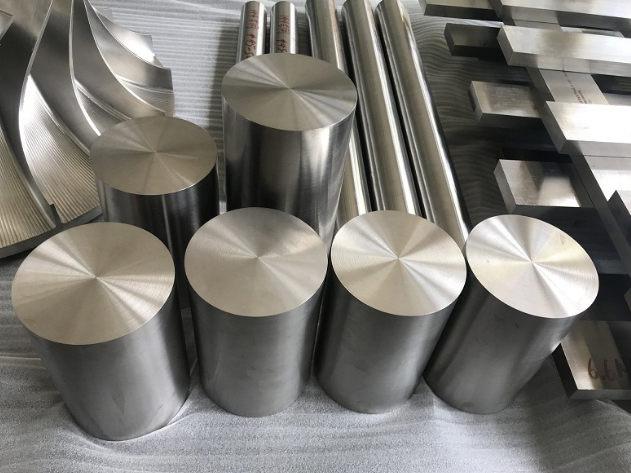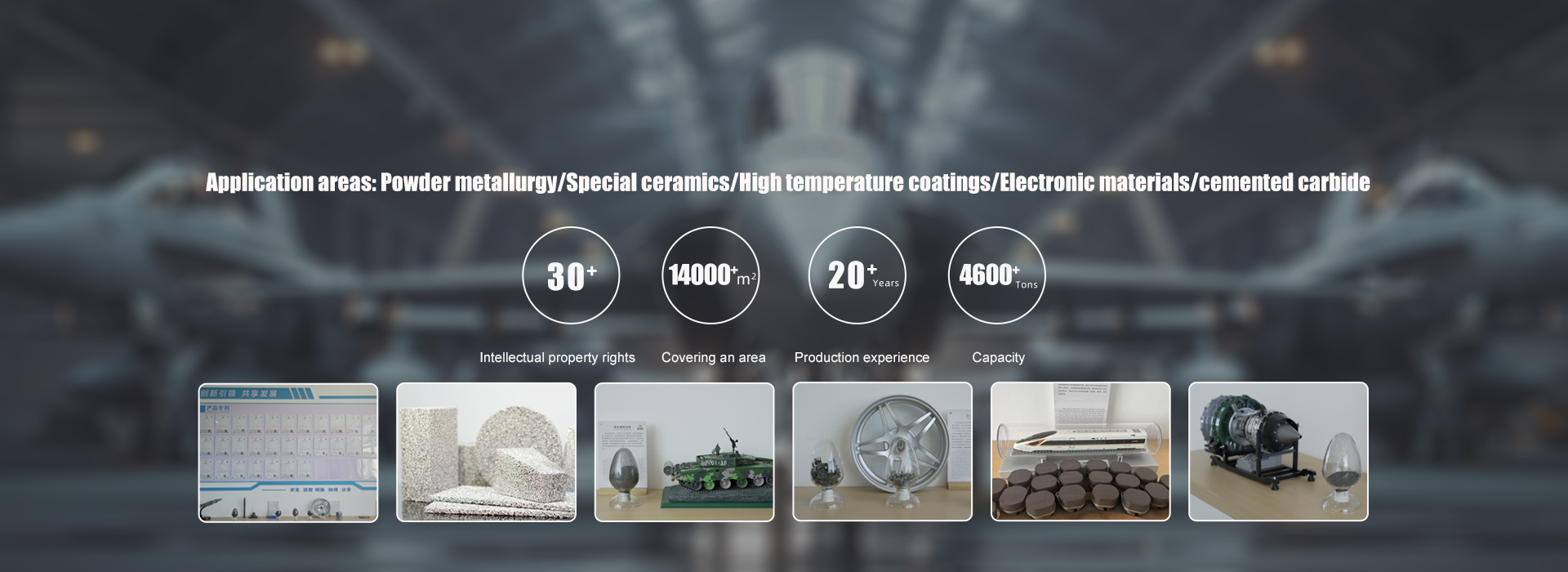
Titanium is an important structural metal developed in the 1950s. Titanium alloys have the characteristics of low density, high specific strength, good corrosion resistance, low thermal conductivity, non-toxic and non-magnetic, weldable, good biocompatibility, and strong surface decoration. They are widely used in aviation, aerospace, chemical, petroleum, power, medical, construction, sports equipment and other fields. Many countries in the world have recognized the importance of titanium alloy materials, and have conducted research and development on them, which have been practically applied.
There are significant regional differences in the demand structure for titanium products. In North America and the European Union, particularly the United States, which have developed aerospace and military defense industries, over 50% of the demand for titanium products comes from the aerospace and military defense sectors. In Japan, industrial titanium from industries such as chemical engineering dominates the demand. According to the Japan Titanium Association, aerospace only accounts for 2% -3% of Japan's titanium demand. Similar to the situation in Japan, the majority of China's demand for titanium products comes from the chemical and energy sectors, with aerospace accounting for only 10%. Although China has become one of the world's largest producers and consumers of titanium, most of its production has been limited to lower grade titanium, which is used for corrosion-resistant pipes in bicycle frames, golf clubs, or the chemical industry. However, in recent years, there has been a significant increase in the amount of titanium used in aerospace in Asia, indicating that the prospects of the titanium market are relatively bright.
Aerospace field
The major countries using titanium in the aerospace industry are concentrated in Western countries, especially the United States, where 60% of titanium materials are used in this field. Asian countries, Japan, and China all invest around 10% of titanium in this field. However, in recent years, with the rapid development of Asia's aerospace industry, the consumption of titanium in the aerospace sector will increase accordingly. From a global perspective, the aviation industry plays a decisive role in the titanium market, and historically, the major cyclical changes in the titanium industry have been closely related to the industry's performance.
In 2011, the global titanium production reached 148000 tons, of which about 64000 tons were used for commercial aviation. The demand for air transportation in the future is still huge due to global economic growth, and it is expected that the demand for new aircraft will be around 30000 in the next 20 years. At the same time, the demand for titanium in new aircraft is higher than that in old aircraft, and it is expected that the average demand for titanium in commercial aircraft will reach 40 tons per aircraft within 20 years; Based on this calculation, the global demand for titanium materials in commercial aviation will increase by about 1.2 million tons in the next 20 years, with a compound annual growth rate of about 17%. The average annual demand for titanium materials will increase by 60000 tons, and the titanium material field for civil aviation will show rapid growth. New opportunities will also emerge in the field of military aviation; Due to the tense global geopolitical situation and the increase in military spending by countries around the world, there is also a possibility of new demand in the field of military aviation.
Civil aircraft
The main uses of titanium alloy in aircraft are as follows:
(1) Reducing structural weight and improving structural efficiency: Advanced combat technology performance (such as supersonic aircraft) requires aircraft to have a relatively low structural weight coefficient (i.e., body structural weight/normal takeoff weight), while titanium alloy has the characteristic of strength close to medium strong steel but low density, replacing structural steel and high-temperature alloys, which can significantly reduce structural weight and save costs; Taking engines as an example, statistical data shows that for every kilogram of weight reduction in aircraft engines, the cost of use can be reduced by approximately $220-440.
(2) Meets the requirements for use in high-temperature areas: Titanium alloy has the characteristic of good heat resistance, such as the commonly used Ti-6Al-4V, which can work for a long time at 350 ℃. Therefore, it can replace aluminum alloys that cannot meet the requirements for high-temperature use in aircraft high-temperature areas (such as the rear fuselage); TC11 can work for a long time at 500 ℃ and can replace high-temperature alloys and stainless steel in the compressor part of the engine.
(3) Meets the requirements of matching with composite material structures: In order to reduce structural weight and meet stealth requirements, advanced aircraft extensively use composite materials. Titanium alloys have good strength and stiffness matching with composite materials, which can achieve good weight reduction effects. Meanwhile, due to the close potential between the two, it is not easy to produce galvanic corrosion, so titanium alloy should be used for the structural components and fasteners in the corresponding parts.
(4) Meets the requirements of high corrosion resistance and long service life: Titanium alloys have high fatigue life and excellent corrosion resistance, which can improve the corrosion resistance and service life of structures, meeting the high reliability and long service life requirements of advanced aircraft and engines.
Military aircraft
The development and procurement of military weapons are constantly moving towards lightweight and flexible direction. In order to meet the combat performance requirements of fighter jets, in addition to adopting advanced design technology, it is also necessary to use high-performance materials and advanced manufacturing technology. One of the important measures is to extensively use titanium alloys and improve the application level of advanced titanium alloys. Since the 1960s, the amount of titanium used in foreign military aircraft has been increasing year by year. Currently, the amount of titanium alloy used in various advanced military fighter jets and bombers designed in Europe and America has stabilized at over 20%, and the proportion of titanium used in new aircraft models is significantly increasing.
Automotive industry
Reducing fuel consumption and minimizing harmful waste (CO2, NOX, etc.) emissions have become one of the main driving forces and directions for technological progress in the automotive industry. Research has shown that lightweighting is an effective measure to achieve fuel savings and reduce pollution. For every 10% decrease in the quality of a car, fuel consumption can be saved by 8% -10%, and exhaust emissions can be reduced by 10%. In terms of driving, the acceleration performance of cars has been improved after lightweighting, and there have also been improvements in vehicle control stability, noise, and vibration. From the perspective of collision safety, after lightweighting, cars have less inertia and reduced braking distance during collisions.
The preferred approach to lightweighting automobiles is to replace traditional automotive materials (steel) with high specific strength lightweight materials such as aluminum, magnesium, titanium, etc. In 2009, the global amount of titanium used in automobiles reached 3000 tons. The application of titanium in racing cars has a history of many years. Currently, almost all racing cars use titanium materials. In Japan, the amount of titanium used in automobiles has exceeded 600 tons. With the development of the global automotive industry, the use of titanium in automobiles is still rapidly increasing.
The advantages of using titanium in cars include: reducing weight and lowering fuel consumption; Improve power transmission efficiency and reduce noise; Reduce vibration and lighten component loads; Improve the durability and environmental protection of vehicles.
Medical industry
Titanium has a wide range of applications in the medical field. Titanium is close to human bones and has good biocompatibility and no toxic side effects on human tissues. Human implants are special functional materials closely related to human life and health. Compared with other metal materials, the advantages of using titanium and titanium alloys mainly include the following: 1. Light weight; 2. Low elastic modulus; 3 non-magnetic; 4. Non toxicity; 5. Corrosion resistance; 6. High strength and good toughness. The amount of titanium alloy used in surgical implants is increasing at a rate of 5% -7% per year. Hundreds of metal components, including femoral heads, hip joints, humerus, skull, knee joints, elbow joints, shoulder joints, metacarpophalangeal joints, jawbones, as well as heart membranes, kidney membranes, vasodilators, splints, prostheses, fastening screws, etc., made of titanium and titanium alloys, have been transplanted into the human body and have achieved good results, receiving high praise from the medical community.
Chemical industry
Titanium has excellent corrosion resistance, mechanical properties, and processability, and is widely used in many sectors of the national economy. Especially in chemical production, titanium is used as a corrosion-resistant material instead of stainless steel, nickel based alloys, and other rare metals. This is of great significance for increasing production, improving product quality, extending equipment lifespan, reducing consumption, lowering energy consumption, lowering costs, preventing pollution, improving working conditions, and increasing labor productivity.
Titanium metal has become one of the main anti-corrosion materials in chemical equipment and has established its corrosion-resistant status in chemical plants. As an ideal material in chemical equipment, titanium is increasingly attracting the attention of engineering and technical personnel.
After years of promotion, titanium and its alloys have been widely used as excellent corrosion-resistant structural materials in chemical production. At present, the application of titanium equipment has expanded from the initial soda ash and caustic soda industries to industries such as chlorates, ammonium chloride, urea, organic synthesis, dyes, inorganic salts, pesticides, synthetic fibers, fertilizers, and fine chemicals. The types of equipment have evolved from small and single to large and diverse.
The survey results show that titanium heat exchangers account for 57%, titanium anodes account for 20%, titanium containers account for 16%, and others account for 7%. In the chemical industry, "two alkalis" are the main ones, and titanium heat exchangers are used the most in chemical equipment.
In recent years, the production technology of titanium materials in China has improved rapidly, with the growth of titanium used in aerospace, military, and automotive industries. Especially in the aerospace field, there is a trend of catching up with titanium used in chemical industries. Overall, the technological content of titanium used in the chemical industry is low, and the added value of products is low. Therefore, the proportion of titanium used in the chemical industry will inevitably gradually decrease.
Ocean Engineering
With the development of science and technology and the increasing depletion of land resources, human development and utilization of the ocean have been put on the agenda. Titanium has excellent corrosion resistance to seawater and is widely used in fields such as seawater desalination, ships, ocean thermal energy development, and seabed resource extraction.
As early as the 1960s, China had already begun research on the application of titanium and titanium alloys in ships and marine engineering equipment, and had done a lot of work. It had basically formed a ship grade titanium alloy system with various properties and complete varieties and specifications. Due to the unique characteristics of titanium and titanium alloys, they have unique advantages in the application of ships and marine equipment, and are widely used in nuclear submarines, deep-sea submersibles, atomic icebreakers, hydrofoils, hovercrafts, minesweepers, propeller propellers, submarine pipelines, condensers, heat exchangers, etc.
In terms of ship applications, currently the amount of titanium used in ships in China is very small, accounting for no more than 1% of the total weight of ships. The development potential of titanium and titanium alloys for ships and marine equipment is enormous. In addition, in terms of seawater desalination and coastal power stations, due to the huge market demand for seawater desalination and coastal power stations in China, with further reduction of titanium alloy costs and improvement of product quality stability, the market application prospects of titanium will be very broad.
Daily life
Titanium is widely used in daily life, and can be said to be ubiquitous, such as golf clubs, bicycle frames, tennis rackets, wheelchairs, eyeglass frames, etc.
Titanium, with its lightweight and high strength characteristics, has gradually expanded its application in sports equipment from tennis rackets and badminton rackets to golf heads, clubs, and racing cars. In 2008, sports and leisure accounted for 13% of total consumption in China, with over 1000 tons of titanium used for golf heads and clubs alone. Bicycle frames made of titanium alloy are also popular, with nearly 50 companies currently producing titanium bicycles. The United States is already the largest producer and consumer of titanium bicycles. The lightweight characteristics of titanium have also been applied to eyeglass frames, and titanium is not easily allergic to the skin. Moreover, the surface of titanium can have brilliant colors after anodizing, so it has been used in eyeglass frames since the early 1980s.
In recent years, the application of titanium in human daily life has been continuously expanding and developing rapidly, and the application technology has become more mature and perfect. In terms of daily life applications of titanium, the United States and Japan are leading the way.








